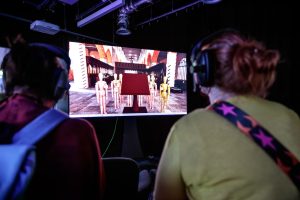Drinkers offered festive cheer as alcohol prices keep inflation low

INFLATION fell by 0.1% in the year to October – the same fall as the previous month, latest figures have shown.
Data from the Office for National Statistics shows the largest upward pressure on prices came from clothing and footwear, while a range of recreational goods were offset by downward price pressures for university tuition fees, food, alcohol and tobacco, resulting in no change to the overall rate of inflation.
In fact, alcoholic beverages and tobacco prices fell by 0.4% between September and October compared with a rise of 0.6% between the same two months a year ago.
This is the first time that prices, overall, have fallen in this sector between a September and October since 2009 and the largest fall between these two months since official records began in 1996.
Since early 2015, the CPI 12-month rate has been very close to 0.0%. The ONS said this meant that, taken as a whole, households had experienced very little change in prices so far this year compared with the same months in 2014.
However, the picture for individual households will depend on the goods and services that they buy. Looking across the year as a whole, prices for transport costs, food and non-alcoholic beverages and to a lesser extent, recreational and cultural goods and services have had a negative pull on the rate of inflation.
These have been counterbalanced by a positive pull from price movements for other goods and services, most notably the cost of eating and drinking out, and education costs such as tuition fees.
Clothing and footwear prices, overall, rose by 2% between September and October this year compared with a smaller rise of 0.6% between the same two months a year ago. This provided the largest contribution to change in the CPI 12-month rate in either direction.
The contribution came primarily from price movements for a broad range of outerwear, where fewer products were on sale this October compared to a year ago. The 2% overall increase in prices is the largest September to October increase since official records began in 1996. This continues the trend seen over the summer of atypical monthly price movements in the clothing and footwear sector, with reports of retailers changing their sales strategies.
In recreation and culture prices, overall, rose by 0.8% between September and October compared with a smaller rise of 0.4% between the same two months a year ago. The upward contribution came from price movements for a range of recreational goods, most notably computer games and consoles.
By contrast, education costs rose by 3.6% between September and October this year compared with a larger rise of 7.9% between the same two months a year ago. This was mainly due to a fall in tuition fees.
The smaller impact was because only the fees for fourth year courses rose to new higher rates this year compared with fees for third year courses rising a year ago, together with the fact that there are fewer fourth year than third year students. In addition there were more modest price increases for part-time and postgraduate fees compared with last year.
Food and non-alcoholic beverage prices fell by 0.4% between September and October compared with a rise of 0.1% between the same two months a year ago. The figures continue the trend of negative food inflation seen over the last 18 months.









